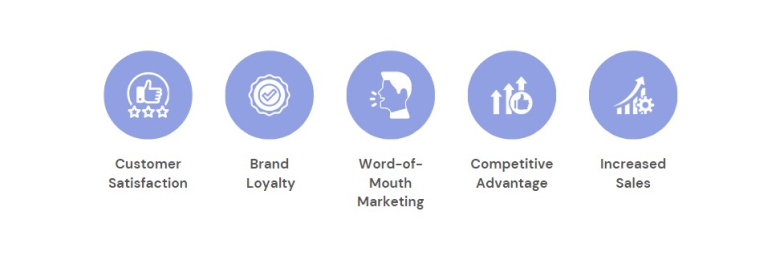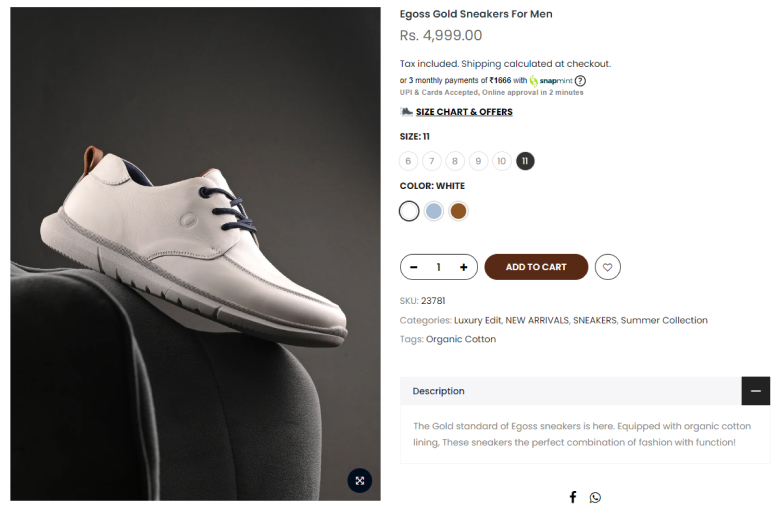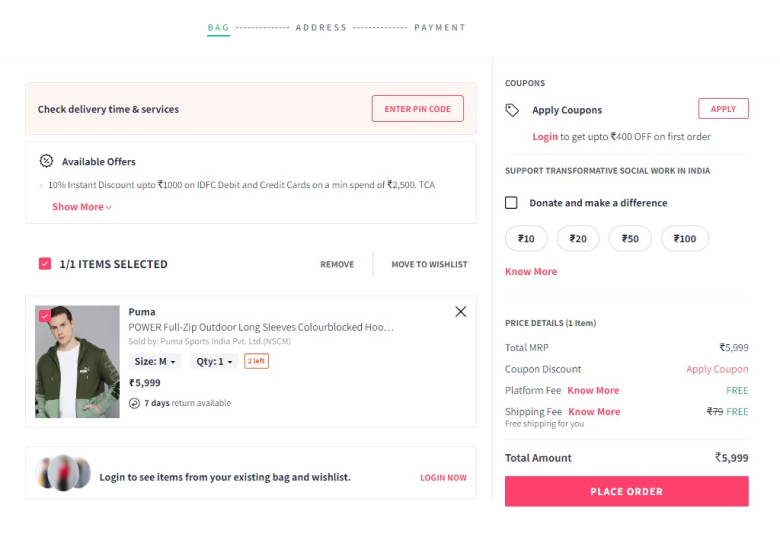Ever find yourself lost in a store, unsure where to turn or what to buy? You’re not alone.
Did you know that 86% of shoppers are willing to pay more for a better shopping experience?
That’s the power of customer satisfaction.
Improving your customers’ shopping experience isn’t about making sales. It’s about creating loyal and satisfied shoppers who keep coming back for more.
From personalized recommendations to streamlined checkout processes, every aspect of the customer journey plays a crucial role in shaping their overall perception of your brand.
Let’s dive in and improve customer’s shopping experience, “one happy customer at a time.”
Build trust & FOMO
Highlight real-time activities like reviews, sales & sign-ups.
What Is Exactly Shopping Experience?
Shopping Experience refers to the overall journey and interactions a customer has while engaging with a brand or retailer to make a purchase, whether it’s in a retail store or online store. It includes every interaction with the brand, from browsing products to post-purchase support.
For online shoppers, this can include the ease of navigation on a website, personal recommendations based on past purchases, and a seamless checkout process. The goal is to make each step enjoyable and convenient for the user.
Benefits of Improving the Shopping Experience
Improving the online shopping experience for customers comes with some pretty cool perks!
When customers have a great time shopping, they’re more likely to come back. It’s like making new friends if you have fun with someone, you want to hang out with them again, right?
Then there’s the fact that happy customers tend to spread the word. Imagine finding an awesome new restaurant – you’d tell buddies, wouldn’t you? Well, the same goes for stores. When people have a blast shopping somewhere, they’re eager to tell their friends and family.
68% of customers are likely to buy again from businesses with great customer service.
So improving the shopping experience isn’t just about being nice – it’s good for business too!
Improving the shopping experience for customers can bring a bunch of good stuff! Here are some of the benefits:

Customer Satisfaction
A positive shopping experience leads to higher customer satisfaction and repeat business.
- Providing personalized recommendations and excellent customer service can significantly enhance customers’ shopping experiences, leading to higher levels of satisfaction and increased loyalty to the brand.
- Encouraging feedback from customers post-purchase can offer valuable insights into areas that may need improvement, ultimately helping e-commerce businesses and retail stores tailor their services to better meet customer needs and expectations.
Brand Loyalty
Brand loyalty is the cornerstone for businesses aiming to build long-term customer relationships.
- Brand loyalty is more than just a transactional relationship. It is based on trust, consistency, and emotional connections between the customer and the brand.
- Offering personalized experiences, exclusive offers and excellent customer service can significantly enhance brand loyalty in today’s competitive market.
- Customers who are loyal to a brand are more likely to become brand advocates, spreading word-of-mouth and driving new customers to both online stores and physical stores.
Word-of-Mouth Marketing
Happy customers are more likely to recommend the brand to others, driving new customer acquisition.
- Happy customers serve as unpaid brand ambassadors, spreading positive word-of-mouth recommendations to their social circles and beyond.
- Encouraging happy customers to share their experiences through testimonials, reviews, or user-generated content can significantly boost brand visibility and make last impressions on potential customers.
Competitive Advantage
A superior shopping experience can differentiate a brand from its competitors.
- Integrating virtual reality technology into online shopping platforms can provide customers with a more impressive experience, allowing them to virtually try on products before making a purchase.
- Personalized recommendations based on previous purchases and browsing history can enhance the online shopping experience by guiding customers to products that align with their preferences.
Increased Sales
Enhancing the shopping experience can lead to higher conversion rates and increased sales.
- Personalization is the key to enhancing the shopping experience online, as it caters to the individual preferences and needs of both in-store shoppers and online shoppers. By offering tailored recommendations, targeted promotions, and a seamless user interface, retailers can create a more engaging and satisfying shopping journey for customers.
- Creating immersive in-store experiences through interactive displays and technology can attract physical store shoppers, encouraging them to spend more time and exploring products and ultimately making more purchases.
Check Out: 20 Easy Ways to Increase Online Sales
What are Today’s Customer Expectations in Online Shopping?
Imagine you’re planning a surprise party for a friend. You wouldn’t just randomly pick decorations and food, right? You’d probably think about what your friends like, what makes them happy, and what would make the party unforgettable for them.
Well, that’s pretty much what understanding customer’s expectations is all about – expect instead of a party, it’s about delivering a top-notch experience every time they interact with your business.
So, how do you do it? It starts with listening. Your customers constantly drop hints about what they want, whether through their feedback, behavior or even facial expressions.
Let’s dive in and uncover the secrets to keep customers smiling…
➥ Identifying What Customers Value in a Shopping Experience
Ever wondered what makes a customer’s shopping experience truly unforgettable?
Well, it’s not just about the products they buy, but the overall experience they have. Understanding what customers value in a shopping experience is key to attracting and retaining loyal shoppers.
Customers today value personalized interactions, seamless transactions, and exceptional customer service. They want to feel appreciated and heard at every point of their journey. Remember, it’s not about selling products; it’s about creating an emotional connection that keeps customers coming back.
Take, for example, Amazon. With its one-click ordering system and hassle-free return process, Amazon has set a high standard for customer experience in e-commerce.
Recommended For You: 15 Latest Tips to Improve eCommerce Customer Experience
➥ Gathering Customer Feedback Through Surveys and Reviews
Are you truly listening to your customers?
Gathering customer feedback through surveys and reviews is like opening a treasure chest of insights into how your customers feel about your products or services. It’s not about collecting data; it’s about understanding the stories and emotions behind each review.
Customers want to be heard, valued, and appreciated for their opinions and experiences. By actively listening to their feedback, you can tailor your offerings to enhance the overall customer experience.
For example, A restaurant may ask diners to rate their meals and provide comments on the overall experience. This not all helps the restaurant understand what customers love but also areas for improvement.
➥ Analyzing Customer Behavior and Preferences
Have you ever wondered what drives customers to make a purchase decision?
Analyzing customers’ behavior and preferences involves studying how individuals make purchasing decisions and what factors influence their choices. By examining data such as browsing history, past purchases, and feedback, businesses can tailor their marketing strategies and gain valuable insights into customers’ preferences.
By tracking metrics like click-through rates, conversion rates, and shopping cart abandonment rates, businesses can identify trends and patterns in customer’s behavior that may inform strategic decision-making.
Utilizing tools such as heatmaps and A/B testing can provide further insights into how customers interact with websites and products online.
Build trust & FOMO
Highlight real-time activities like reviews, sales & sign-ups.
Key Elements for Improving Online Shopping Experience
Imagine you into your favorite online shopping store. What makes that experience so enjoyable?
It’s more than just grabbing what you need and leaving – it’s a journey.
Every step you take, every product you touch, and every interaction you have shape your experience. This journey, my friend, is what we call the customer journey.
Here are the 10 best resources to follow and create a perfect shopping experience.
Well, let’s unpack it together…
1. User-Friendly Website Design
- Intuitive Navigation: Ensure your website is easy to navigate with a clear, logical menu structure. Categories should be well-defined, and search functionality should be robust and accurate.
- Responsive Design: Make sure your site is mobile-friendly, as a significant portion of shopping is done on smartphones and tablets. The design should adapt seamlessly to different screen sizes.
- Fast Loading Times: Optimize your website to load quickly. Slow websites frustrate users and can lead to higher bounce rates.
- Clear Call-to-Action Buttons: Strategically placed call-to-action buttons, such as Add to Cart or Buy Now, help guide customers through the purchasing process and encourage them to take action.
2. High-Quality Product Images and Descriptions

- Detailed Descriptions: Provide thorough, accurate product descriptions that include key features, specifications, and benefits. This helps customers make informed decisions.
- High-Resolution Images: Use high-quality images that allow zooming. Show products from multiple angles and include photos of the product in use.
- Videos: Incorporate product videos to give customers a better sense of the product.
- Comparison Charts: Provide comparison charts with similar products, highlighting the unique features and benefits of your offering and aiding customers in their decision-making process.
3. Customer Reviews and Ratings
- Visible Reviews: Display customer’s reviews and ratings prominently on product pages. This social proof can help build trust and influence purchase decisions.
- Encourage Reviews: Send follow-up emails post-purchase to encourage consumers to leave reviews.
- Verified Reviews: Implement a system to verify the reviews come from actual customers who have purchased the product. This adds credibility to the reviews and helps consumers trust the authenticity of the feedback they are reading.
- Address Negative Reviews: Respond to negative reviews promptly and professionally. Show that you care about your customer experience and are willing to make things right. This can turn a negative situation into a positive one and build customer loyalty.
Check Out: 7 Smart Ways to Make Shoppers Trust Your Online Store
4. Simplified Checkout Process

- Guest Checkout Option: Allow customers to check out as guests without creating an account.
- Minimal Steps: Streamline the checkout process by reducing the number of steps and required fields. Auto-fill options can help speed up the process.
- Multiple Payment Options: Offer various payment methods, including credit/debit cards, PayPal, and other digital wallets.
- Promotional Code Redemption: Allow consumers to enter promotional codes or coupons during checkouts to apply discounts or special offers, promoting purchases and improving customer loyalty.
5. Personalized Shopping Experience
- Product Recommendations: Use algorithms to suggest products based on browsing history and past purchases.
- Personalized Emails: Send personalized email offers and recommendations to consumers based on their shopping behavior.
- Interactive Wishlists: Allow customers to create and manage wishlists and send them notifications when items in their list go on sale or come back in stock.
- Visual Search Technology: Implement visual search tools that allow customers to find products by uploading images, making the online shopping experience more intuitive and personalized.
6. Excellent Customer Service

- Live Chat Support: Provide real-time assistance through live chat to help customers with their queries instantly.
- Clear Contact Information: Make it easy for customers to find contact details for support.
- Comprehensive FAQ Section: Develop a detailed FAQ section on the e-commerce website covering common inquiries and troubleshooting steps, allowing customers to find answers to their questions quickly without needing to contact support.
- Follow-up: Follow up with customers after resolving their issues to ensure they are satisfied with the outcome and to address any remaining concerns.
7. Loyalty Programs and Discounts
- Loyalty Rewards: Implement a loyalty program to reward repeat customers with points, discounts, or exclusive offers.
- Seasonal Discounts and Promotions: Offer customers regular discounts and special promotions to attract and keep customers for a better online shopping experience.
- Referral Programs: Encourage existing customers to refer friends and family by offering them incentives such as discounts, credits, or freebies for successful referrals.
- Point Recommendation Options: Provide various ways for customers to redeem their loyalty points, such as discounts on future purchase, or free products giving them flexibility and choice.
8. Interactive and Engaging Content

- Blog and Guides: Provide valuable content through blogs, buying guides, and how-to articles to engage customers and help them make informed decisions.
- Social Media Integration: Connect your Ecommerce site with your social media channels to keep customers engaged with your brand.
- Contests and Giveaways: Host contests or giveaways on your e-commerce site and social media platforms to encourage participation and excitement among your audience. This can help increase engagement and attract new consumers.
- Polls and Surveys: Incorporate pools and surveys on your e-commerce website to gather customers’ feedback and opinions. This not only encourages interactions but also helps you better understand your customer experience.
9. Secure Shopping Environment
- SSL Certificates: Ensure your website is secure with SSL certificates, which protect shoppers data.
- Trust Badges: Display trust badges and certifications to reassure customers about the security and reliability of your site.
- Two-Factor Authentication: Implement two-factor authentication for added security during the checkout process or login, requiring customers to verify their identity through a secondary method.
- Secure Payment Gateways: Select trusted payment gateways that provide encryption and fraud protection, including credit protection services, to secure customers’ payment details and enhance their online shopping experience.
10. Transparent Policies
- Clear Return Policy: Have a clear, easy-to-find return policy that outlines the process and conditions for returns and exchanges.
- Shipping Information: Provide detailed shipping information, including costs, delivery times, and tracking options.
- International Shipping Policies: Explain any additional considerations or charges for customers ordering from outside your primary shipping area.
- Expectations and special cases: Identify any special circumstances where the standard return policy may not apply, such as personalized items or final sale items.
Build trust & FOMO
Highlight real-time activities like reviews, sales & sign-ups.
Conclusion
Enhancing the shopping experience for your customers is crucial for building loyalty and driving business growth. By prioritizing customers’ experience in both retail and online stores, you can create a seamless and enjoyable journey for your shoppers.
Offering personalized recommendations, easy navigation, quick checkout, and responsive customer support are key factors in improving the online shopping experience. Similarly, knowledgeable staff, organized layouts, and interactive displays can enhance the in-store experience.








